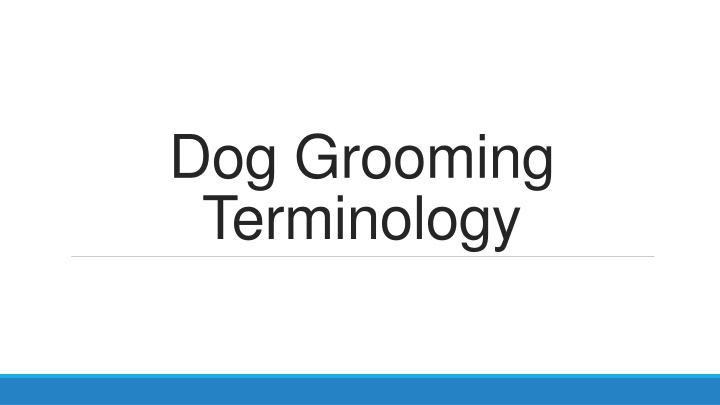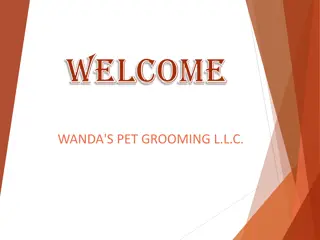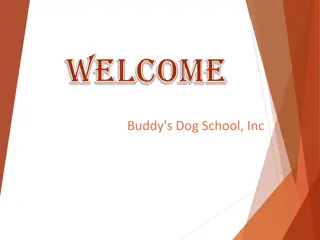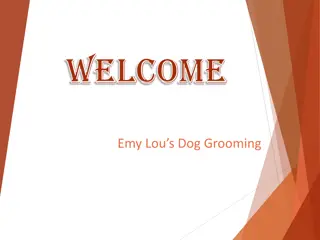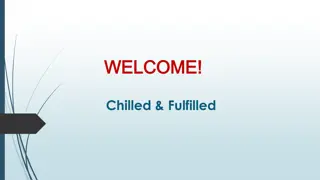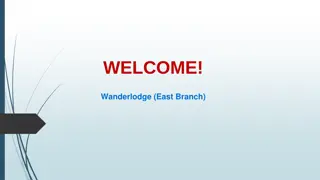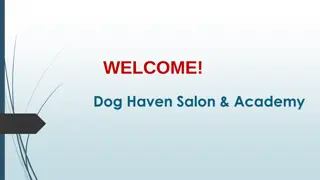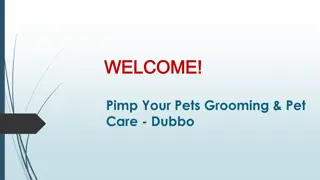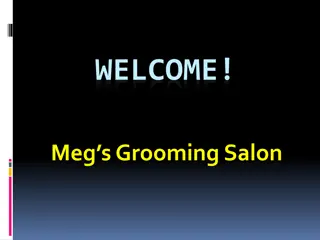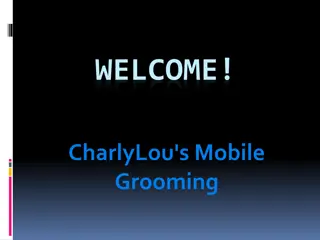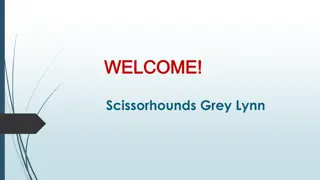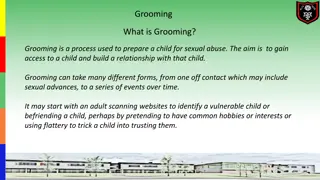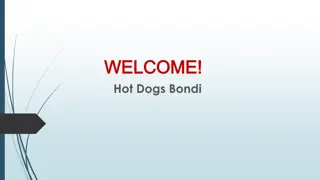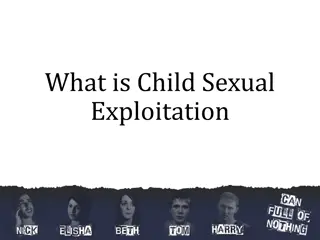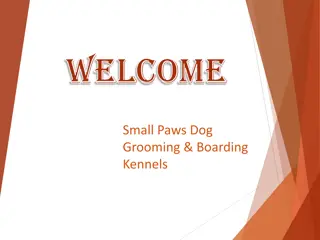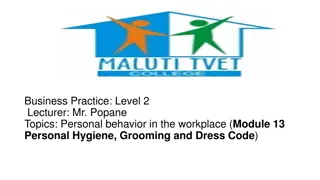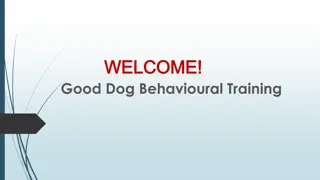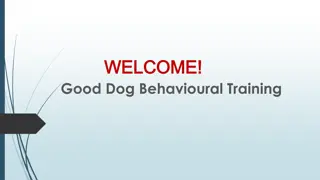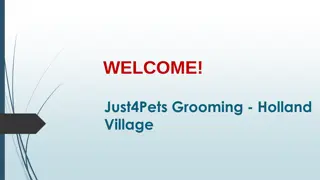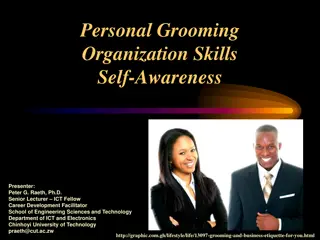Essential Dog Grooming Techniques and Equipment
Discover key dog grooming terminology, techniques, and equipment to enhance your grooming skills. Explore methods like dematting, reverse clipping, and handstripping, along with tools such as slicker brushes and pin brushes. Improve your grooming abilities with this comprehensive guide.
Download Presentation

Please find below an Image/Link to download the presentation.
The content on the website is provided AS IS for your information and personal use only. It may not be sold, licensed, or shared on other websites without obtaining consent from the author.If you encounter any issues during the download, it is possible that the publisher has removed the file from their server.
You are allowed to download the files provided on this website for personal or commercial use, subject to the condition that they are used lawfully. All files are the property of their respective owners.
The content on the website is provided AS IS for your information and personal use only. It may not be sold, licensed, or shared on other websites without obtaining consent from the author.
E N D
Presentation Transcript
Dog Grooming Terminology
Introduction This PowerPoint contains some terminology you may find useful when starting out in your dog grooming journey. In particular it will look at: - Grooming techniques - Equipment used - Products available - Grooming health
Grooming Techniques Terminology Blending You can use your thinning scissors to blend the coat. This removes sharp lines and leaves a softer finish. Carding A blunt tool is used to remove loose/dead undercoat. Cat Foot The hair between the toes of a dog is scissored to the same length as the hair on top of the feet. This can leave the nails visible. Clipping Lines When clipping a dog, we follow the clipping lines. This means we clip following hair growth, and the breed standard guidelines. This gives a show level finish. Dead Coat This is dead undercoat that is no longer attached, and as a result it is ready to be removed.
Grooming Techniques Terminology Dematting This involves removing the matts from a dogs coat, using various different tools. Fluff Drying This is undertaken on wool type coats (or combination coats that are wool based). Once a blaster has led to a dampened the coat, a stand dryer and slicker brush are used to straighten and finish drying the whole coat. Furnishings The feathering on the backs of dogs legs, behind ears and under belly. Handstripping This method removes dead outer coat of wire haired breeds. Various tools can be used including finger condoms, stripping knife, fingers and chalk.
Grooming Techniques Terminology Reverse Clipping To achieve this method you have to clip against the way the hair grows on a dog. It can be used to create a neater finish on dogs with finer coats. You have to use a longer blade than you would normally as the blades produce a shorter finish this way. Rough Clipping This clipping takes place before bathing. It is usually completed if a dog is severely matted or does not like the drying process. Styling continues after as normal to get the correct finish. Round Feet Each foot is scissored to look fluffy and round, with no nails on display. Skirt This is the longer hair that hangs between the front and back legs of a dog, giving the appearance of a skirt.
Grooming Equipment De-matter Used to remove matts that are not tight to the skin. The tool is hooked behind them and gently tugged to break the matt. Slicker Brush This brush is used on most coat types to remove knots after a bath. It is also the most effective fluff drying brush. You must avoid overuse of this brush as it can lead to friction burn. Pin Brush This brush is designed for silky coated breeds or for those with skin problems as it will not aggravate them. Rubber Brush This is great on smooth coated breeds. You can rub round the coat in circles to remove dead hair.
Grooming Equipment Thinning Scissors Used for blending and reducing the thickness of a coat. Straight Scissors These scissors are principally used for styling the dog. They can trim the skirt, feathers, feet and head regions. Curved Scissors Useful when achieving round faces and feet. Bullnose Scissors Can be used around the eye regions of dogs to trim. The rounded edges make them safer than standard scissors for wiggly dogs. Comb Once a dog has been brushed out, it should be combed through to make sure all knots have been removed from the coat.
Grooming Equipment Nail Clippers These come in various sizes and are used to trim the nails of dogs below the quick. Nails should not touch the table once cut. Comb Attachments These comb in a range of sizes and are coloured for ease of use. Normally used on wool and combination coats. You can pick your desired length(s) and achieve a nice teddy style finish. Clippers Come in both corded and cordless varieties. They are used to put both blades and comb attachments on. Blades These come in different lengths. A 30 blade is used under pads, a 10 blade is used for the hygiene area, other blades are used to determine the length of the coat left.
Grooming Products Klipwell A solution used to clean your clipper blades. Barbicide This solution is used in ratio form to clean your scissors. 4 in 1 Spray This has four purposes: cleans dirt from blades, lubricates them, cools blades down and disinfects them. Can be used throughout grooms. Ear Cleaner This ear wash can be used to safely remove grime from the outer ears of dogs. The inner ear is not cleaned as this is classed as invasive. Fast Dri Spray This can be sprayed over a coat to reduce its drying time. Styptic Powder Blood coagulents that can be used to seal the quicks in nails, when they have been taken to short and started to bleed.
Grooming Products Safe 4 Spray This is used to clean down work surfaces and restraint equipment between grooms. It is human and pet safe. Wahl Dirty Beastie This is the normal shampoo we offer. Wahl Oatmeal This is the sensitive shampoo used if dogs have any allergies or skin problems. Conditioning Spray This product helps to detangle a coat whilst giving it a nice glossy finish. Colognes There are lots of different types of cologne that make dogs smell nice at the end of a groom. They can change for seasons and special events. You may want a special cologne that owners will return for.
Grooming Health Terminology Canker Inflammation of a dogs ear canal. Dander This is dried saliva built up in a dogs coat from them licking themselves or shed skin cells. Many people are allergic to dander as opposed to dog fur. Dermatitis This is a skin disorder. There are 3 types: Lick, Fold and Canine Acne. They can lead to sore and infected skin. Dysplasia - The abnormal formation and degeneration of the joints. This causes a dog pain and can lead to dislocation. Weight gain in dogs, will worsen dysplasia symptoms. Ectropion The eyelid of a dog rolls out, causing the eye to be more exposed and irritation to occur.
Grooming Health Terminology Entropion The eyelid rolls in on itself (normally the lower lid). This causes irritation to the eye and if not fixed can lead to visual impairments. Luxating Patella Also known as trick knee. The patella (knee cap) moves out of its normal location. It is common in small terrier breeds and will present itself with a skip in their step. Osteoarthritis Usually a degenerative condition that worsens as dogs age and put on weight. It causes pain and inflammation on the joints of dogs, which overtime will prevent them from completing activities they used to. Pancreatitis The pancreas of a dog becomes inflamed. They will lose appetite, vomit and have a painful stomach. Vets are required for treatment. It can be reoccurring.
